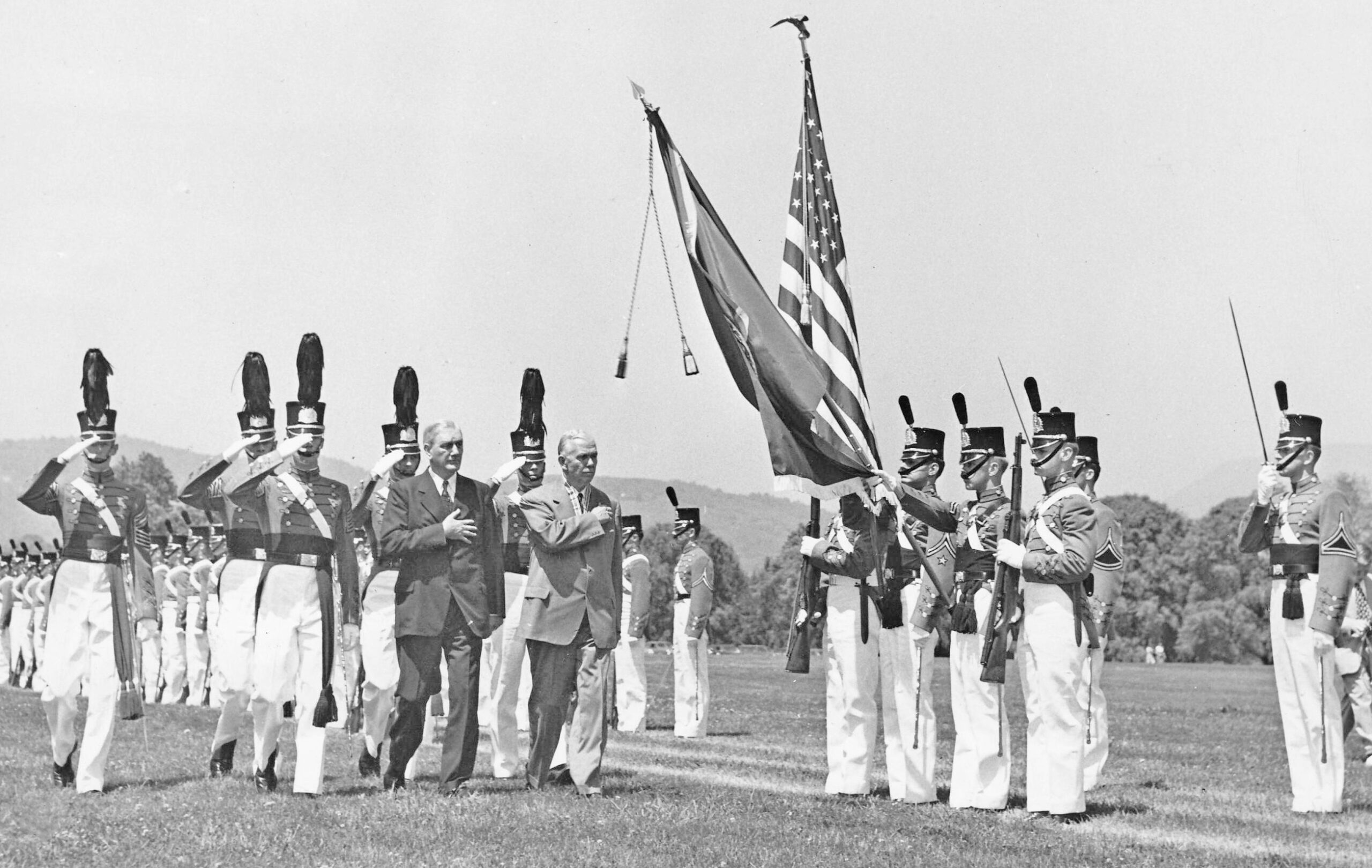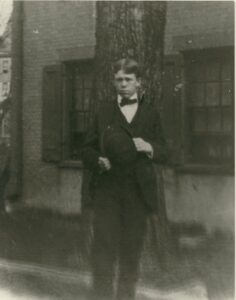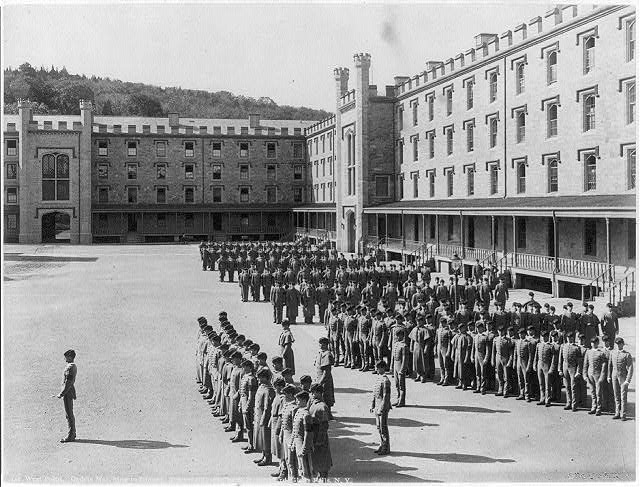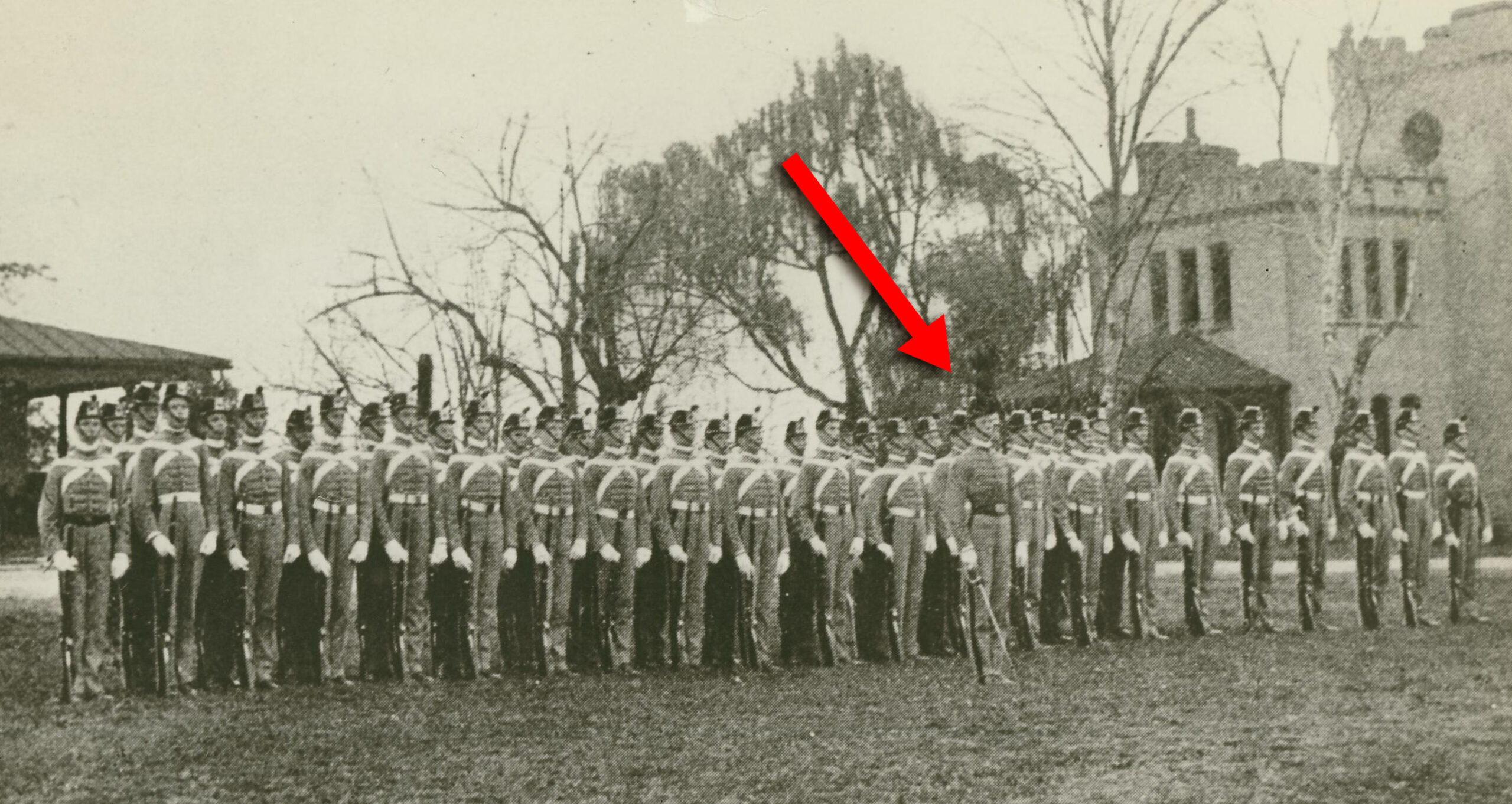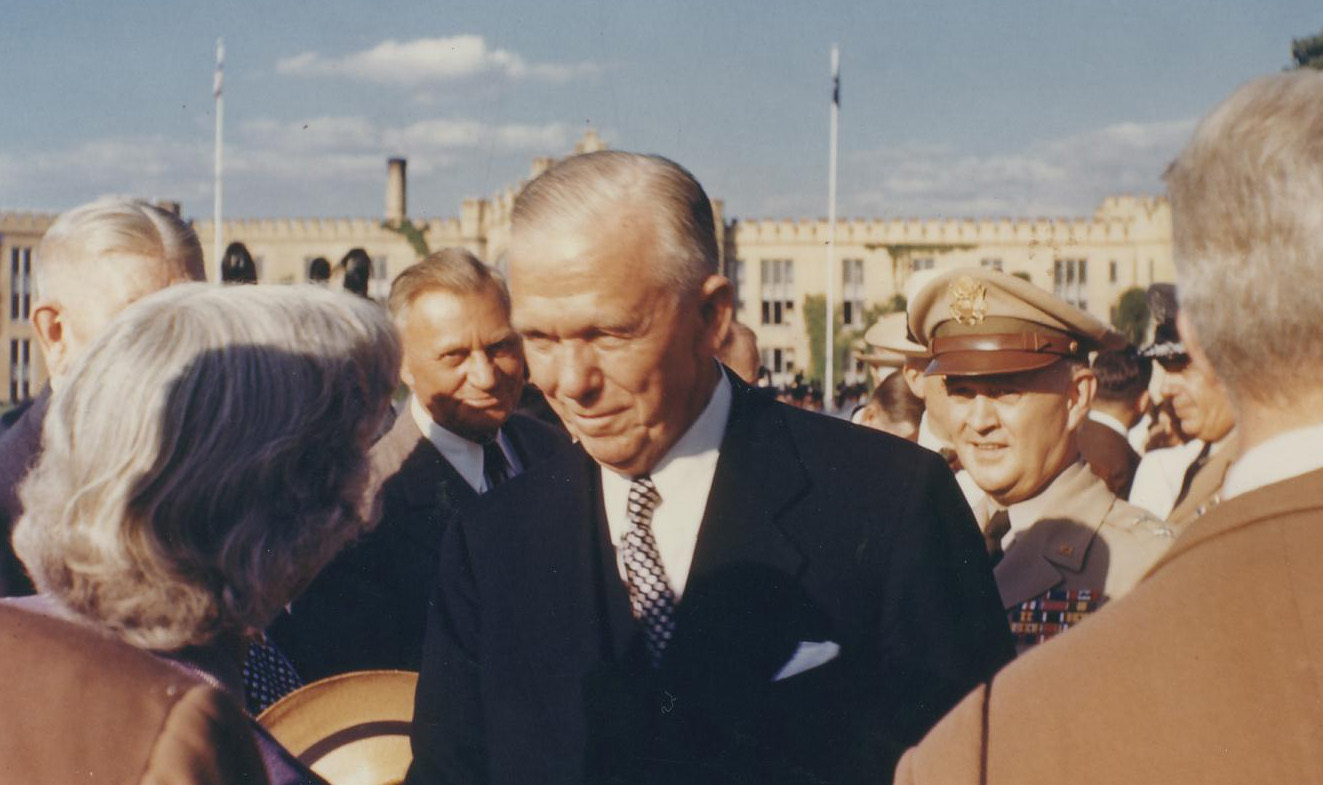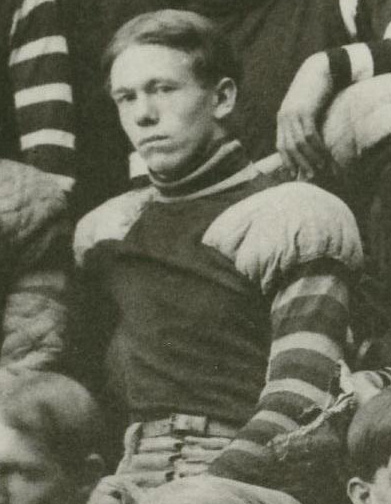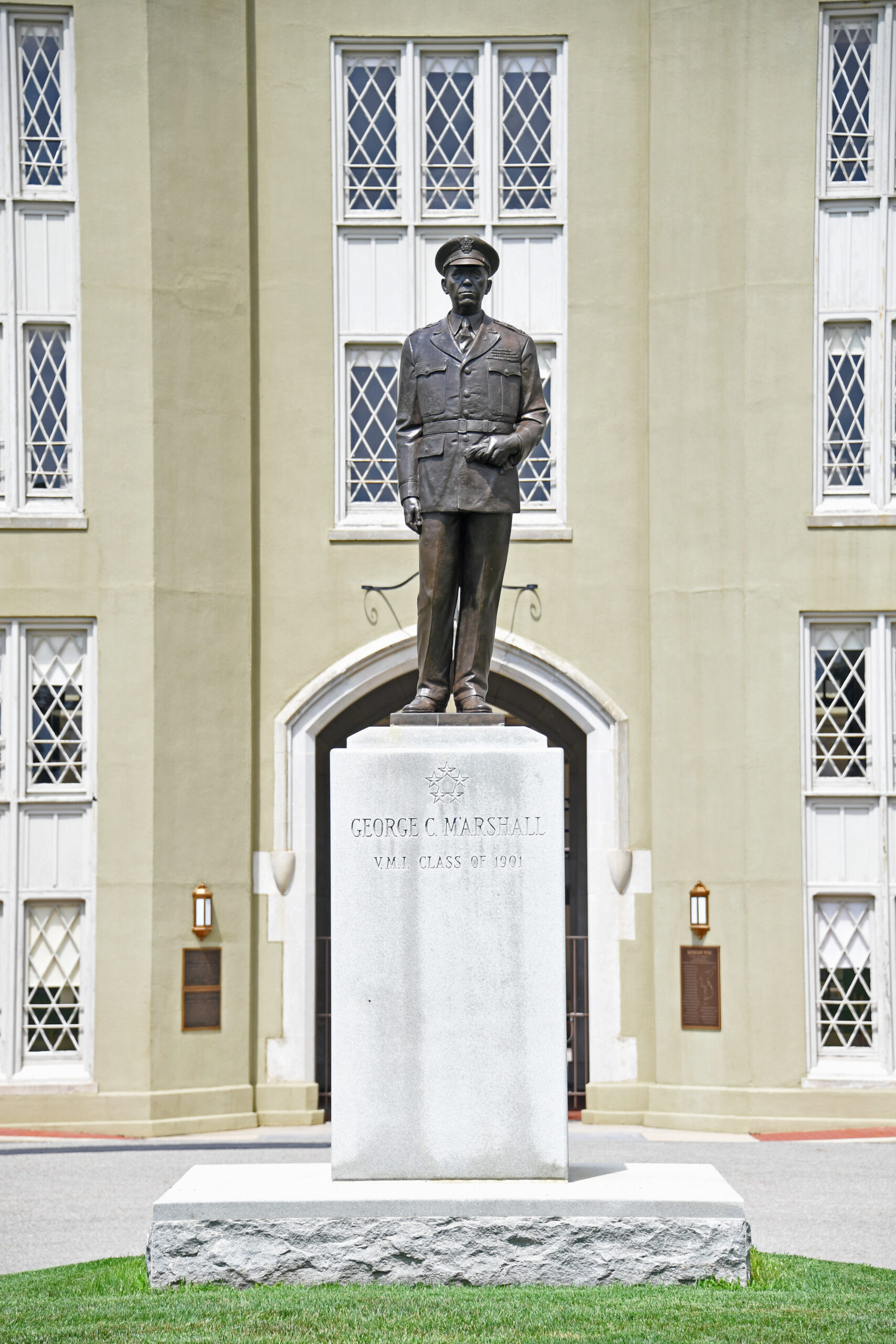George C. Marshall attended the Virginia Military Institute between 1897 and 1901. Majoring in civil engineering, Marshall was First Captain of the corps of cadets from 1900 to 1901, played left tackle for the VMI Keydets football team, always ranked first in military discipline, and was in the middle of the pack academically. His time at VMI was strenuous and demanding, but the lessons he learned there heavily influenced his accomplishments during his long, storied career.
Why did Marshall go to VMI?
Biographer Forrest C. Pogue indicates that, at the time, the purpose of the strict military routine of student life at VMI was in the service of developing discipline, rather than preparation for a career in the military. Marshall later said “My hope was to be an army officer, but the prospects looked pretty dim.”
Marshall’s brother Stuart had attended VMI but did not think George was capable of repeating his success. In an interview with Pogue, Marshall recalled “When I was begging to go to VMI, I overheard Stuart talking to my mother; he was trying to persuade her not to let me go because he thought I would disgrace the family name. Well, that made more impression on me than all instructors, parental pressure, or anything else. I decided right then that I was going to wipe his eye.”
Why didn't Marshall attend West Point?
Marshall gave three reasons why he did not attend West Point:
1. He could not get the required Congressional nomination because of his father’s lack of expected political connections.
2. He did not have the grades—Marshall was a poor student in high school.
3. A previous injury to his arm meant that he would not pass the physical examination.
What was Marshall's first year at VMI like?
“The cadet life in itself was very strict,” said Marshall, “but the hazing, which was very strenuous when I was there, made it still stricter. The first year was quite an ordeal, though I came afterwards, like all the rest of my friends, to look back on it with more appreciation than I did any other year.”
Marshall recounted a hazing incident where he was made to squat over an upturned bayonet as a test of endurance. He fell, gashing his buttock. These practices have since been banned by the school in favor of a formalized system of endurance training in order to generate leaders who can perform their future military leadership responsibilities. Read more in this article by Mike Morrison (VMI ’20).
Was Marshall a good student?
Marshall said “I was about 35th in a class of 135 or thereabouts in my first year.”
Pogue writes that throughout his four-year academic journey, Marshall made steady progress, albeit landing somewhere in the middle of his class in most subjects. Marshall did not enjoy the classes at VMI, and was especially frustrated by the lack of courses in history and the social sciences.
However, his efforts in military training were more successful. By the end of his fourth (freshman) year, Marshall was announced as first corporal, leading the list of cadet officers.
How did VMI impact Marshall's life after graduation?
Quotes from General Marshall indicate how he applied lessons from life at VMI to his career:
“What I learned most at the V.M.I. was self-control, discipline, so it was ground in, and the problem of managing men.”
“I was being disciplined, and I was learning discipline. I was learning responsibility and, of course, that was particularly the case as I rose in cadet rank where I had very great responsibility.”
“The impact of the V.M.I. on my later leadership was probably much greater than I realized at the time. Having been a First Sergeant and later a First Captain meant a great deal in control. I had specific things to do. I was responsible for the men, and you couldn’t go to sleep on that. That required your attention every minute. You had to know just what you were doing, and you had to have some talent at putting it over.”
Did you know?
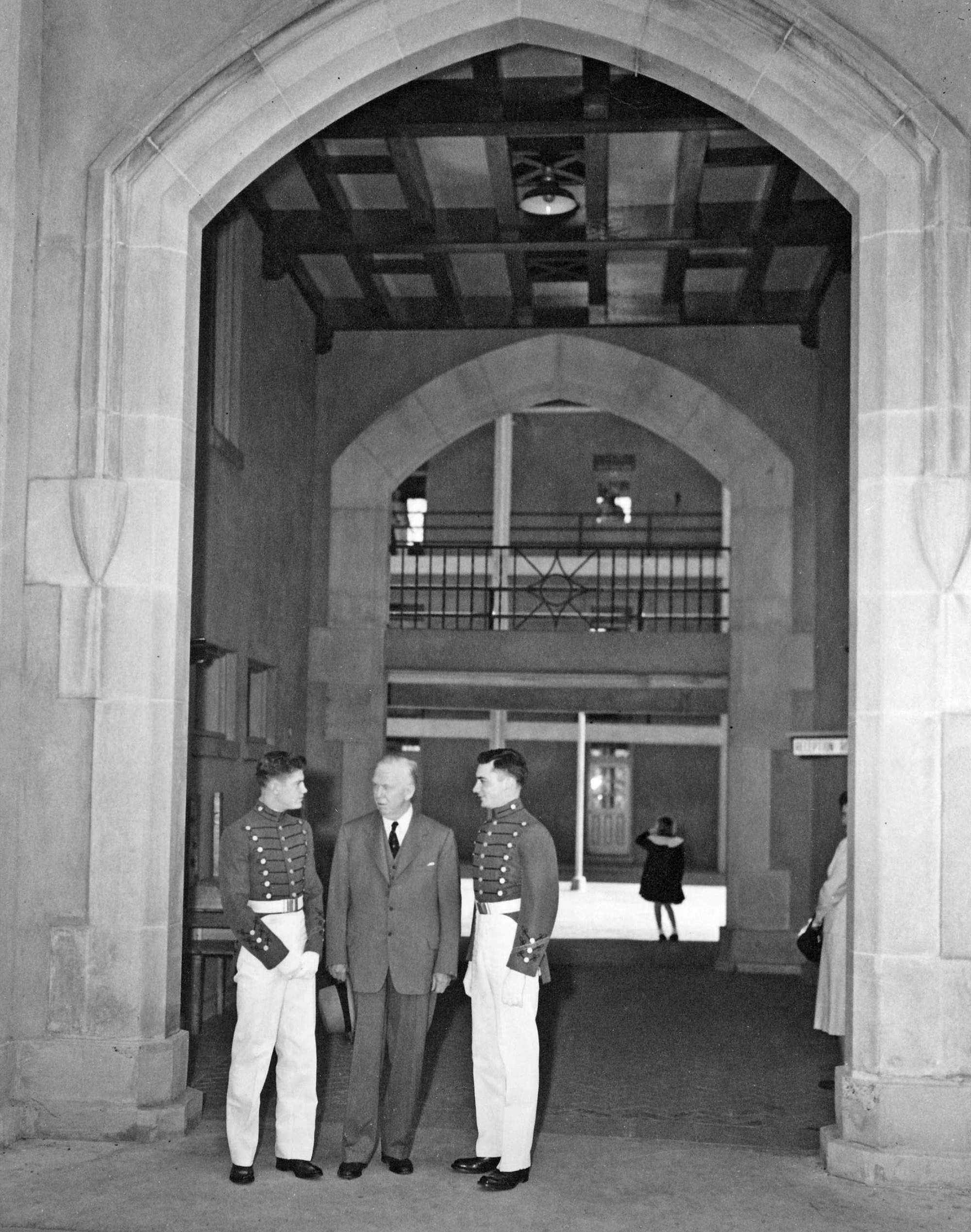
Marshall speaks with cadets at the dedication of the George Catlett Marshall Arch, VMI, May 15, 1951.
- Marshall was honored by VMI on May 15, 1951, 50 years after his graduation, when an entranceway to newly-constructed barracks were dedicated in his name. George C. Marshall is the only non-native Virginian to have an arch named in his honor at VMI.
- Marshall’s aide and confidante, Frank McCarthy, also attended VMI. He graduated in 1931, later becoming a movie producer and winning the Academy Award for Best Picture for his work on Patton.
Marshall and Football
In order to prevent further injuring an untreated pulled tendon in his right elbow, Marshall made a vow to his mother that he wouldn’t play sports during his first two years. At the beginning of his third year, he decided to try out for the football team.
After the 1899 VMI football season was cancelled after one game due to a typhoid epidemic, Marshall returned the following year as the starting left tackle. The team compiled a record of 3-1-2.
Marshall and Lily
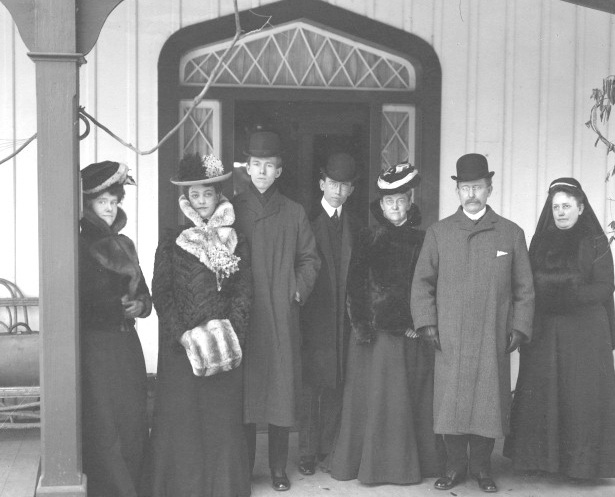 Marshall met his first wife, Elizabeth “Lily” Carter Coles, while he was a cadet.
Marshall met his first wife, Elizabeth “Lily” Carter Coles, while he was a cadet.
Classmate Erskine Miller said that he and Marshall would often go to her house and listen to her play the piano. Miller decided to stop visiting with Marshall when it looked as if he was serious about her. Marshall would sneak off post to see her, risking disciplinary action or expulsion. The two were married at Lily’s house (now the VMI Admissions office) on Letcher Avenue in Lexington, Virginia on February 11, 1902.
More resources
In this lecture from 2022, Col. Bradley L. Coleman discusses Marshall’s contributions to the culture of VMI and how the institution conceives of its own history.
Glen Carpenter began working at the George C. Marshall Foundation in 2018. He has a background in American studies (focusing on film, music, aesthetics and twentieth-century consumer culture) and video production. He lives in Roanoke, Virginia.

